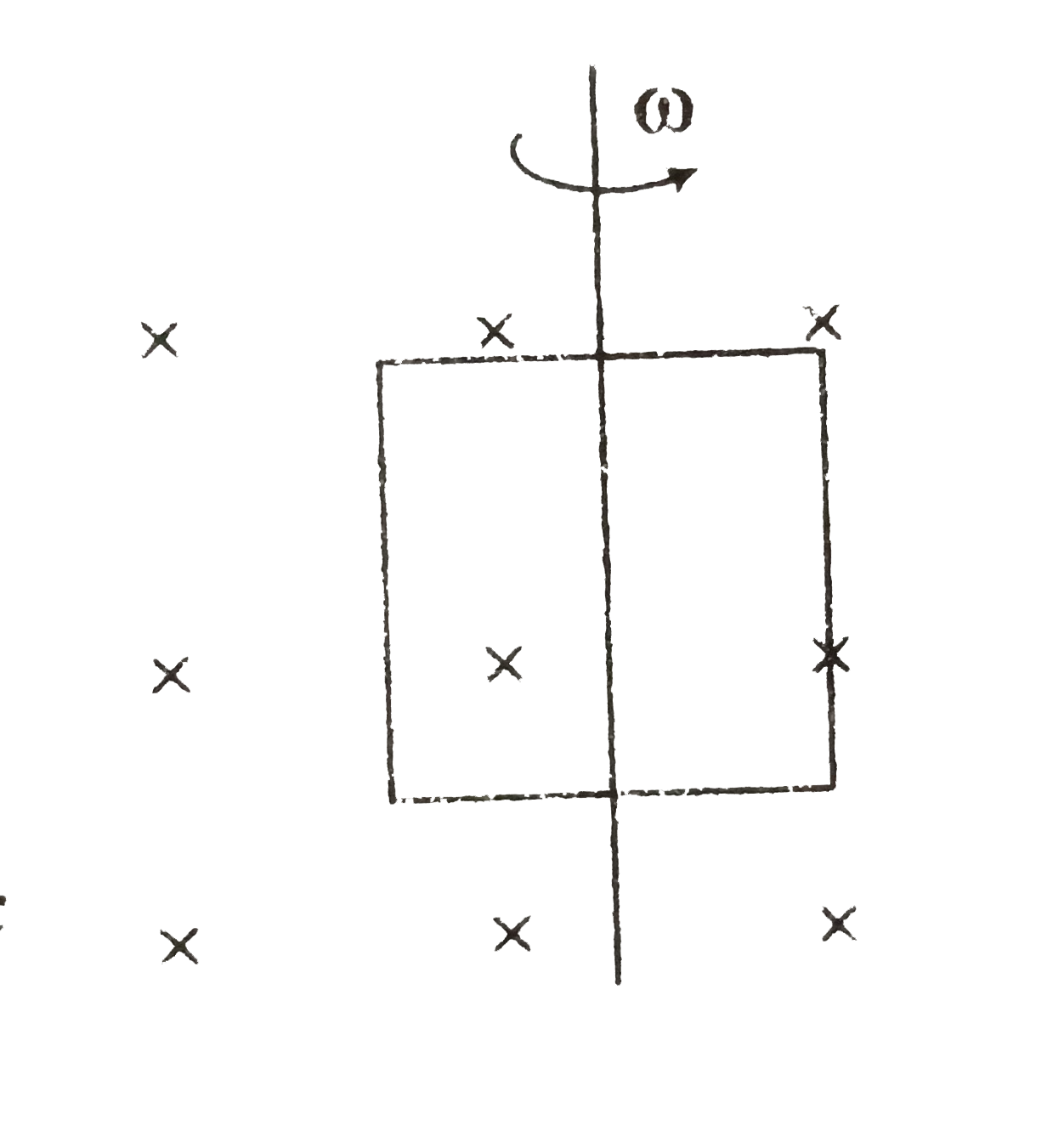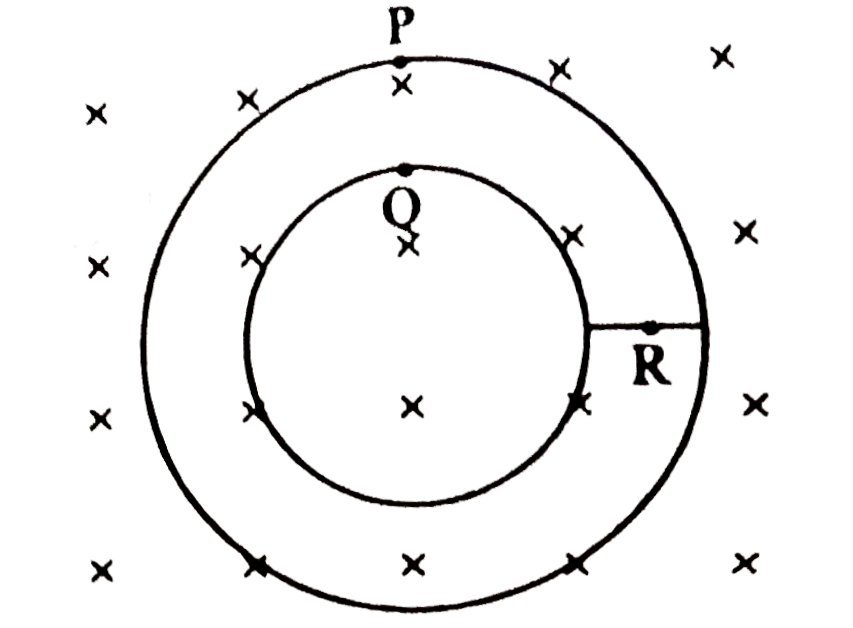Is an induced e.m.f developed in a conductor, when moved in a direction parallel to the magnetic field?
To determine whether an induced electromotive force (e.m.f) develops in a conductor when it is moved in a direction parallel to the magnetic field, we can analyze the situation using Faraday's law of electromagnetic induction.
1. Understanding Electromagnetic Induction:
- Electromagnetic induction occurs when there is a change in magnetic flux through a conductor. According to Faraday's law, the induced e.m.f (ε) in a closed loop is directly proportional to the rate of change of magnetic flux through the loop.
2. Define Magnetic Flux:
- Magnetic flux (Φ) is defined as the product of the magnetic field (B) and the area (A) through which the field lines pass, taking into account the angle (θ) between the field lines and the normal to the surface:
Φ=B⋅A⋅cos(θ)
3. Movement of the Conductor:
- When a conductor is moved parallel to the magnetic field lines, the angle (θ) between the magnetic field and the area vector of the conductor remains constant. Therefore, the area exposed to the magnetic field does not change.
4. Change in Magnetic Flux:
- Since there is no change in the angle or the area through which the magnetic field lines pass, the magnetic flux (Φ) through the conductor remains constant.
5. Induced e.m.f Calculation:
- As per Faraday's law, since there is no change in magnetic flux (ΔΦ = 0), the induced e.m.f (ε) can be expressed as:
ϵ=−dΦdt=0
- This indicates that no e.m.f is induced when the conductor is moved parallel to the magnetic field.
6. Conclusion:
- Therefore, the answer to the question is no, an induced e.m.f is not developed in a conductor when it is moved in a direction parallel to the magnetic field.
- Electromagnetic induction occurs when there is a change in magnetic flux through a conductor. According to Faraday's law, the induced e.m.f (ε) in a closed loop is directly proportional to the rate of change of magnetic flux through the loop.
- Magnetic flux (Φ) is defined as the product of the magnetic field (B) and the area (A) through which the field lines pass, taking into account the angle (θ) between the field lines and the normal to the surface:
Φ=B⋅A⋅cos(θ)
- When a conductor is moved parallel to the magnetic field lines, the angle (θ) between the magnetic field and the area vector of the conductor remains constant. Therefore, the area exposed to the magnetic field does not change.
- Since there is no change in the angle or the area through which the magnetic field lines pass, the magnetic flux (Φ) through the conductor remains constant.
- As per Faraday's law, since there is no change in magnetic flux (ΔΦ = 0), the induced e.m.f (ε) can be expressed as:
ϵ=−dΦdt=0
- This indicates that no e.m.f is induced when the conductor is moved parallel to the magnetic field.
- Therefore, the answer to the question is no, an induced e.m.f is not developed in a conductor when it is moved in a direction parallel to the magnetic field.
Topper's Solved these Questions
- BOOK - AAKASH SERIESCHAPTER - ELECTROMAGNETIC INDUCTIONEXERCISE - Problems (Level-I)28videos
ELECTROMAGNETIC INDUCTION
- BOOK - AAKASH SERIESCHAPTER - ELECTROMAGNETIC INDUCTIONEXERCISE - Problems (Level-II)14videos
ELECTROMAGNETIC INDUCTION
- BOOK - AAKASH SERIESCHAPTER - ELECTROMAGNETIC INDUCTIONEXERCISE - Exercise (Short Answer Questions)21videos
ELECTROMAGNETIC INDUCTION
- BOOK - AAKASH SERIESCHAPTER - ELECTRIC FIELD AND POTENTIALEXERCISE - PROBLEMS (LEVEL-II)26videos
ELECTRIC FIELD AND POTENTIAL
- BOOK - AAKASH SERIESCHAPTER - ELECTROMAGNETIC WAVESEXERCISE - EXERCISE -II22videos
ELECTROMAGNETIC WAVES
Similar Questions
(A): An induced current develop in a conductor moved in a direction parallel to the magnetic field. (R): An induced current is developed when the number of magnetic lines of force associated with conductor is changed.
View SolutionAssertion A conducting loop is rotated in a uniform magnetic field with constant angular velocity ω as shown in figure. At time t = 0, plane of the loop is perpendicular to the magnetic field. Induced emf produced in the loop is maximum when plane of loop is parallel to magnetic field.
Reason When plane of loop is parallel to magnetic field, then magnetic flux passing through the loop is zero.
 View Solution
View Solution
Knowledge Check
- Question 1 - Select One
What rule do we use to find the direction of induced current in a conductor moving in a magnetic field?
AFleming's left hand ruleBFleming's right hand ruleCAmpere's ruleDRight hand clasp rule
(A): In equation F=q(E+v×B) when v = 0, any force on the charge must arise from the electric field term E alone
(R): To explain, the existence of induced emf or induced current in static conductor kept in time - varying magnetic field, we must assume that a time - varying magnetic field generates an electric fieldView SolutionA current flows in a conductor from east to west. The direction of the magnetic field at a points above the conductor is
View SolutionIn a coaxial, straight cable, the central conductor and the outer conductor carry equal currents in opposite directions. The magnetic field is zero.
View SolutionThe total charge induced in a conducting loop when it is moved in magnetic field depends on
View SolutionThe induced e.m.f. in a coil does not depend on
View SolutionFigure shown plane figure made of a conductor located in a magnetic field along the inward normal to the plane of the figure. The magnetic field starts diminishing. Then the induced current
 View Solution
View SolutionA proton moves at a speed v=2×106m/s in a region of constant magnetic field of magnitude B = 0.05 T. The direction of the proton when it enters this field is θ=30∘ to the field. When you look along the direction of the magnetic field, then the path is a circle projected on a plane perpendicular to the magnetic field. How far will the proton move along the direction of B when two projected circles have been completed?
View Solution

